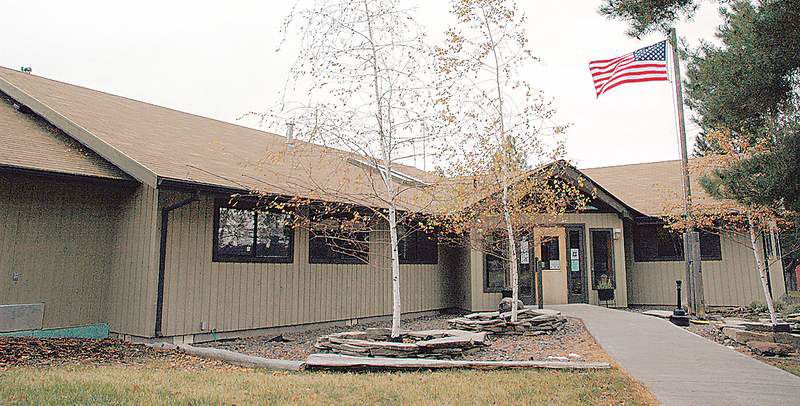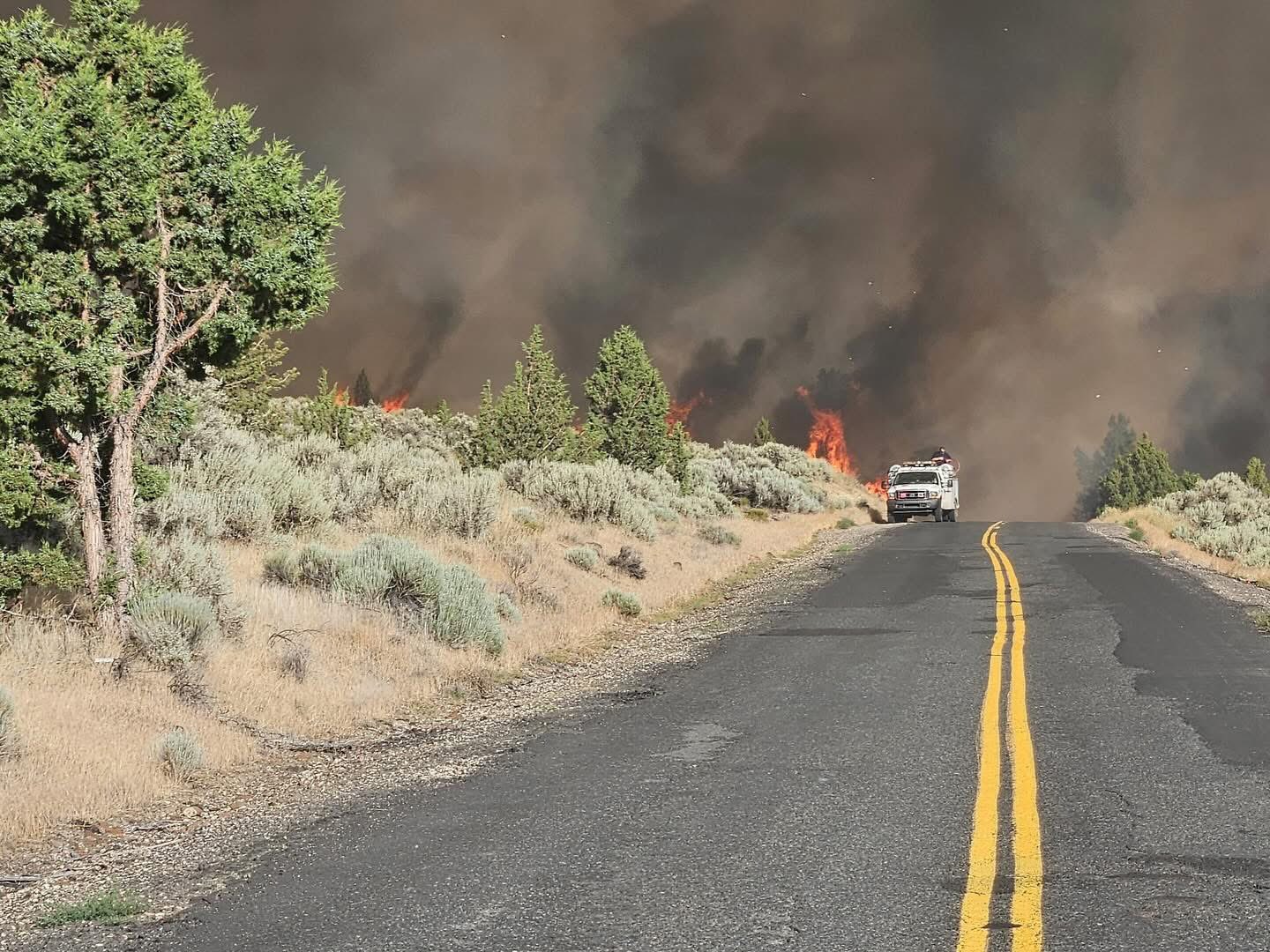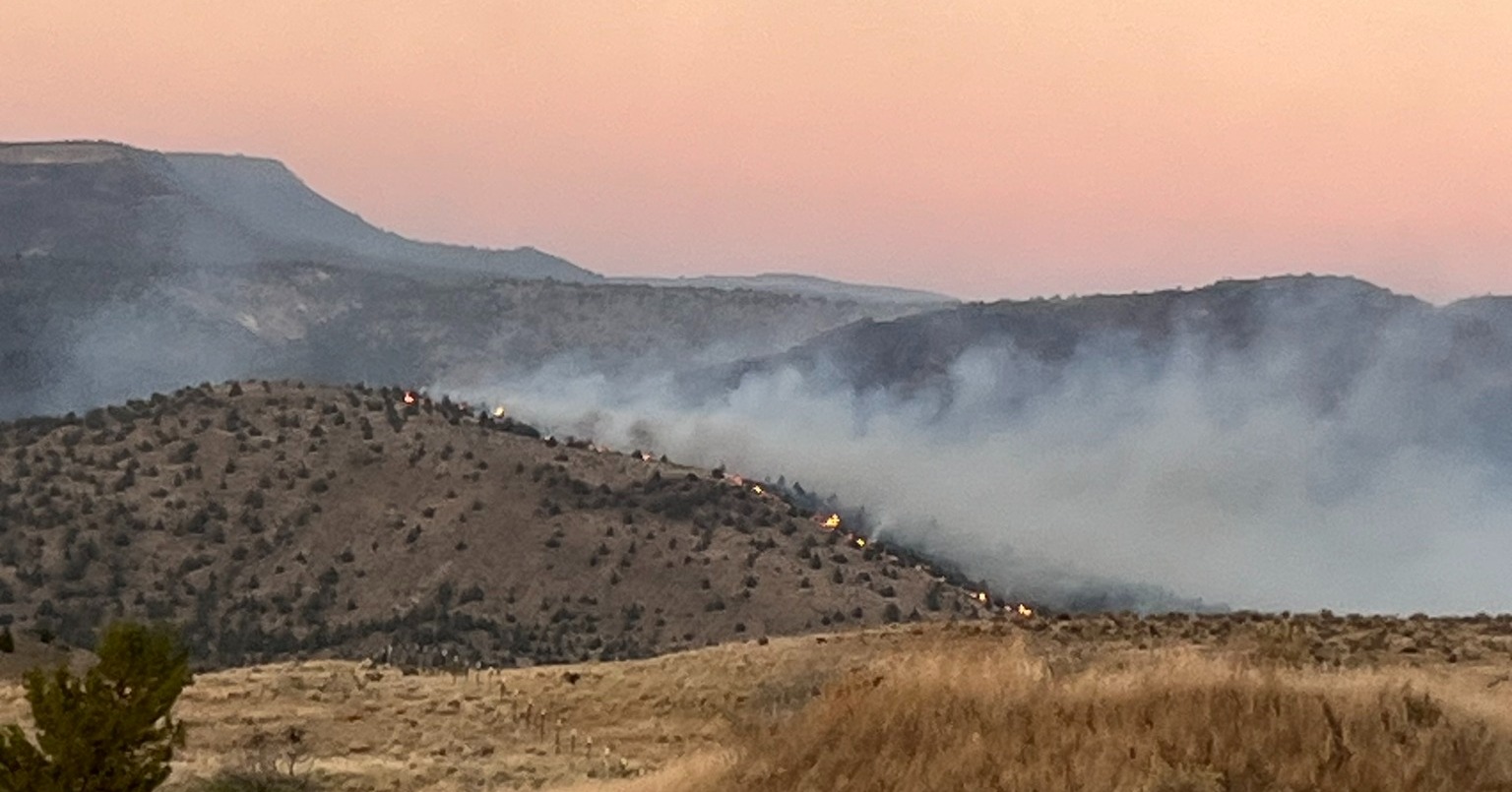Let’s talk turkey
Published 4:00 am Thursday, November 26, 2009

- The American flag flies next to Rager Ranger Station on a cloudy day. The most remote ranger station in the Pacific Northwest, it houses U.S. Forest Service employees.
In the spirit of Thanksgiving, two Central Oregon girls traveled on roads they had never traversed before — from Prineville to Post to Paulina to Rager Ranger Station in the Ochoco National Forest — in search of a wild turkey.
“Where are you taking me?” colleague Jenny Harada asked from the passenger seat as I drove deeper into the increasingly sparse Eastern Oregon landscape.
Trending
“Gobble gobble,” I replied.
We were practicing our turkey calls in the car as we drove, hoping it might help us to catch a glimpse of a wild turkey.
In 2007, turkeys were released in the Ochoco National Forest. According to the U.S. Forest Service Web site, wild turkeys also have been spotted in the area of Green Ridge near Sisters and around Black Butte Ranch. We set our sights on Rager Ranger Station, where Brian Ferry, wildlife biologist for the U.S. Fish and Wildlife Ochoco Wildlife District, had recently seen wild turkeys roosting on the buildings’ rooftops.
We practiced turkey calls that I had looked up on the National Wild Turkey Federation’s Web site. I discovered the calls “plain yelp of a hen,” “cutting of excited hen” and “fly down cackle,” which is associated with a turkey’s movement. We also exercised our vocal cords with the more traditional turkey call: the gobble, gobble.
People often use turkey calls to attract the birds, according to Ferry.
“That’s a very common technique to establish whether turkeys are even in the area, and when you are in the hunting mode, to see if you can say the right thing in turkey talk and see if they will come in close,” he said.
Trending
Hunting season for turkeys east of the Cascades runs from April 15 to the end of May. It costs $18 to purchase a hunting tag for a bearded turkey or a tom male turkey. If Central Oregonians wants to shoot a turkey for Thanksgiving, they must travel west of the Cascades for fall hunting season, which runs from Oct. 15 to Dec. 31. Both hens and toms are fair game during the fall season because population control is the main purpose, according to Dave Budeau, upland game bird coordinator with the Oregon Department of Fish and Wildlife.
Turkeys are native to North America, though not to Central Oregon, and have been released in the area mainly for hunting according to Ferry. The most common subspecies of birds that have been released include the Rio Grande from Texas and Oklahoma, the Merriam from the mountainous regions of the Western United States and the Eastern turkey from the eastern part of the country.
During winter months, wild turkeys often retreat to lower elevations. Their diet consists of fruits, berries, nuts, insects, seeds and worms throughout the seasons.
As we drove along the Paulina Highway, we saw the landscape change into ranch territory with sagebrush and rabbitbrush along the edges. After a wrong turn onto a gravel road past Paulina — where we should have continued to go straight — we eventually spotted some pine trees on the hills, where Ferry said the turkeys might be residing.
Despite the wrong turn, we arrived at Rager Ranger Station to hear good news.
“Last Thursday, when I was leaving here, there were more than 70 (turkeys). I stopped counting at 50,” said Char Rouse, administrative support assistant for the ranger station, about the birds she saw crossing the road in front of her.
The area around Rager Ranger Station was originally homesteaded by James Rageor in 1862, according to 19th-century plat records. It is suspected, by Paulina Ranger District archaeologist Kathleen Edwards, that the city of Prineville clerks may have incorrectly recorded the homesteader’s name as Rageor instead of Rager.
The original ranger station was built in 1908. According to a map with a handwritten reference, the station started as Rager Spring Ranger Station but soon became Rager Ranger Station after the forest supervisor realized that it had been built about a quarter mile from the spring. Now, the station houses Forest Service employees, and it is the most remote ranger station in the Pacific Northwest, according to a previous article from The Bulletin.
Forest Service employees provided us with a map and indicated where we might see the wild turkeys, which are notoriously difficult to find and hunt. We walked alongside a rocky drop that led to trickling Rager Creek and toward the pine trees stationed on a hill across the creek.
It wasn’t long, about a quarter of a mile, before we heard some bird sounds that reminded me of those I had heard on the Internet. The calls consisted of numerous loud gobbles, as if an intense conversation were under way among some nearby wild turkeys.
The calls actually sounded like more of a high-pitched and fast bark, but there was no denying it was a turkey. We crept closer to the sounds and stopped, watching.
Then we saw them, First one, then two, then 10 and eventually close to 30 wild turkeys silhouetted against the remaining snow. They meandered through the pine trees and crossed Rager Creek with energetic strides and feathers flapping. We tried to sneak quietly near them for a closer encounter. Our excitement mounted as we spotted more and other groups of turkeys, their cacophony of gobbles infiltrating the cold, winter air.
Their bodies, covered with gray feathers, were smaller than I had expected. Despite the small bodies, though, the turkeys walked and waddled with fast steps as if they couldn’t wait to get wherever they were going, even though it seemed as if they didn’t really know where that was.
They followed each other across the creek and, after possibly noticing how our gobble noises did not correspond with their conversation, quickly jumped the creek again and walked up the hill from where they had come. We could hear their calls even after they disappeared from view.
After our first spotting of wild turkeys, the drive back to Prineville was full of animals, including cows and deer crossing the road. We also spotted other bird life, such as a hawk, osprey and an elusive bald eagle, but none were as exciting as the flock of turkeys we encountered.
The day had been a success. And this Thanksgiving, while looking at the turkey sitting on the table, we will hold a new appreciation for the birds after seeing them in the wild.








